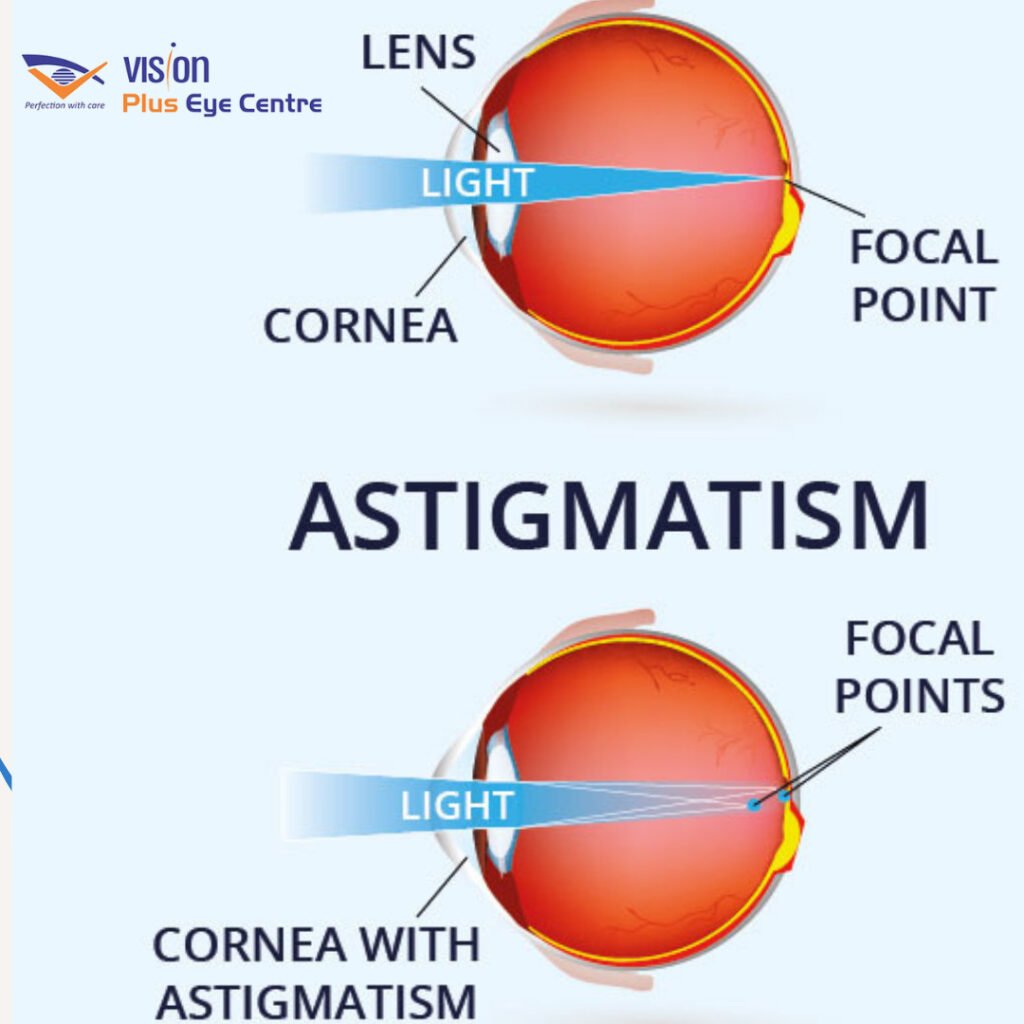
Astigmatism is a common eye condition that affects the curvature of the eye’s cornea or lens. It can cause blurry or distorted vision, eye discomfort, and headaches. While corrective lenses like glasses or contact lenses are commonly prescribed to manage astigmatism, daily eye exercises can also play a crucial role in improving vision and reducing the severity of this condition. In this article, we will explore astigmatism, its causes, and a series of daily eye exercises that can complement traditional treatment methods.
Understanding Astigmatism
Astigmatism is a refractive error that occurs when the eye’s cornea or lens has an irregular shape. In a healthy eye, the cornea and lens are smooth and evenly curved, like the surface of a basketball. However, in an eye with astigmatism, these structures have an uneven curvature, similar to a football. This irregular shape causes light to focus unevenly on the retina, leading to blurred or distorted vision.
Astigmatism can either be congenital or manifest during one’s lifetime. Common symptoms include:
- Blurred or distorted vision at any distance.
- Eye strain and discomfort.
- Frequent headaches, particularly following extended periods of reading or screen use.
- Difficulty with night vision.
- Squinting to see clearly.
- Causes of Astigmatism
Astigmatism manifests in two main forms: corneal astigmatism and lenticular astigmatism: corneal astigmatism and lenticular astigmatism. Corneal astigmatism occurs when the cornea has an irregular shape, while lenticular astigmatism results from an uneven curvature of the eye’s lens. Astigmatism can also be classified as regular or irregular, depending on the nature of the irregularity.
The exact cause of astigmatism is not always clear, but several factors can contribute to its development.
Genetics: A family history of astigmatism increases the likelihood of developing the condition.
Eye injuries or surgeries: Trauma to the eye or certain eye surgeries can alter the shape of the cornea or lens.
Keratoconus: This progressive eye condition causes the cornea to become thin and bulge forward, resulting in irregular astigmatism.
Eyelid pressure: Excessive pressure on the eyelids, often associated with conditions like keratoconus, can change the cornea’s shape.
Repetitive eye movements: Certain eye behaviors, such as frequent eye rubbing, can contribute to astigmatism.
Daily Eye Exercises for Astigmatism
While eye exercises alone may not eliminate astigmatism, they can help improve visual acuity, reduce eye strain, and complement traditional treatment methods. Here are some daily eye exercises to consider:
Palming:
- Rub your hands together to generate heat.
- Gently cover your closed eyes with your cupped palms, ensuring not exert pressure.
- Take a few deep breaths and visualize darkness for about 30 seconds.
- Slowly remove your hands and open your eyes.
- Palming helps relax the eye muscles and reduces eye strain.
Focus Shifting:
- Sit comfortably and hold your index finger about 6 inches in front of your face.
- Concentrate on your finger’s presence for a brief moment.
- Slowly shift your focus to an object in the distance.
- Repeat this process several times, alternating between near and distant objects.
- Focus shifting exercises help improve eye coordination and flexibility.
Eye Rolling:
- Sit or stand with your back straight.
- Look straight ahead, then slowly roll your eyes in a circular motion, first clockwise, then counterclockwise.
- Perform this exercise 5-10 repetitions in both clockwise and counterclockwise directions.
- Eye rolling can help relax the eye muscles and improve their range of motion.
Near-Far Focus:
- Grasp a small object, such as a pen or pencil, at arm’s length and direct your gaze toward it for a few moments.
- Slowly bring the object closer to your nose, maintaining focus.
- Move the object back to arm’s length.
- Repeat this process 10-15 times.
- This exercise helps improve the eye’s ability to shift focus between near and far objects.
Blinking:
- Blink rapidly for about 30 seconds.
- Shut your eyes and inhale deeply for a few breaths.
- Open your eyes and blink slowly for another 30 seconds.
- Blinking exercises help moisturize the eyes, reduce dryness, and prevent eye strain.
Zooming:
- Hold a small printed text at a comfortable reading distance.
- Slowly bring the text closer to your eyes until it becomes slightly blurry.
- Move the text away until it’s clear again.
- Repeat this process for a few minutes.
- Zooming exercises can improve the eye’s ability to focus and accommodate different distances.
It’s essential to perform these exercises regularly, preferably under the guidance of an eye care professional. Additionally, remember that while these exercises can be beneficial, they are not a replacement for prescribed treatments like eyeglasses, contact lenses, or refractive surgery, if recommended by your eye specialist.
Conclusion
Astigmatism can affect anyone at any age, but with the right combination of treatment, including corrective lenses and daily eye exercises, you can effectively manage this condition and improve your vision. Prioritize your eye health, and if you suspect you have astigmatism or experience changes in your vision, consult an eye specialist in Noida for a comprehensive eye examination and personalized treatment plan. Your vision is a precious gift, and with the right care, you can enjoy clear and comfortable sight for years to come.
Call Now at 0120-2481481, 2480480 +91 88003 13134 or email us at info@visionplus.net.in.
Book an Online Appointment: https://visionplus.net.in/contact/

